The key to avoiding serious injury or death during a major winter storm is knowing the safety rules.
|
|
Why should I be concerned about winter weather?
|
|
Changes in elevation can be subtle or dramatic, but often a slight increase in elevation can mean big changes in travel and trail conditions. The weather may be tranquil in the valley areas, while motorists are being stranded in areas like Clines Corners, Tijeras Canyon, the Continental Divide, Raton Pass, or near Ruidoso. On the less traveled highways, there are numerous and often remote spots where motorists may become stranded. Use the 511 phone number and NMDOT webpage for weather-related road conditions and road closures.
|
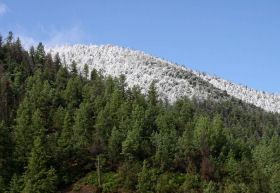 Photo by Paula Valentine
Photo by Paula Valentine |
|
|
-
Everyone is potentially at risk during winter storms, but statistics show that males and the elderly suffer death and injury most frequently, whether it is accidents related to ice and snow or exposure to the cold.
-
Sudden weather changes also threaten the unprepared hiker, hunter, or cross country skier. You might find yourself in mild and sunny weather at the start of your outdoor adventure then face falling temperatures, wind chill, and cold rain or snow as a storm front moves in quickly.
-
Tragically, alcohol is related to many winter weather deaths and injuries each year in New Mexico due to prolonged exposure to the cold.
-
Prolonged outbreaks of cold weather, especially following heavy snows and ice storms, can create risks at home if utility service is lost or conditions prevent travel for medical care and food. Alternative heat sources may become deadly without fire safeguards or proper ventilation.
|
What rules or winter weather skills will help keep me safe?
|
-
Be prepared. Take action before the first winter storm to winterize automobiles and prepare emergency survival kits. At home, stock up on food, fuels, first-aid and medical items and other supplies such as batteries for flashlights and radios. Don't forget to check fire extinguishers, smoke detectors, and carbon monoxide detectors.
-
Keep up with the latest forecasts and statements from the National Weather Service. Always check the latest forecast before going into mountain areas and don't leave that radio or portable TV behind which could provide weather forecast updates.
|
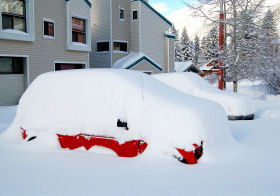
Photo by Seth Bullinton
|
-
If possible, avoid travel during winter storms. If you must travel immediately before or during a storm, try not to travel alone. Let someone know your travel schedule and routes. If stranded while traveling, it is best to stay with your vehicle. You can be more at risk trying to walk through the storm for help. In some instances, New Mexicans have died trying to go less than 1/2 mile for help. Make your vehicle as visible as possible for easier rescue. You can periodically run the motor for short periods each hour, but remember to allow fresh air and ventilation to avoid carbon monoxide poisoning. When hiking, hunting, skiing, or if your job takes you into mountainous areas, know the weather forecast! Take along extra clothes, food or supplies that could save your life. If stranded overnight, learn survival techniques for shelter and fire making. A fire will provide heat and can attract attention. Place rocks around the fire to absorb and reflect heat. melt snow for drinking water. Do not eat snow! It will lower the body temperature. Eat and drink sufficient amounts of water. Food provides the body with energy for producing its own heat. Keep the body replenished with fluids to prevent dehydration.
Remember, be prepared in advanced and ready to handle sudden changes during any wintertime travel or outdoor activity. |
|
|
-
Keep ahead of advancing winter weather by listening to NOAA Weather Radio.
- A powerful winter storm will take down power lines knocking out electricity. Check battery powered equipment before the storm arrives.
|
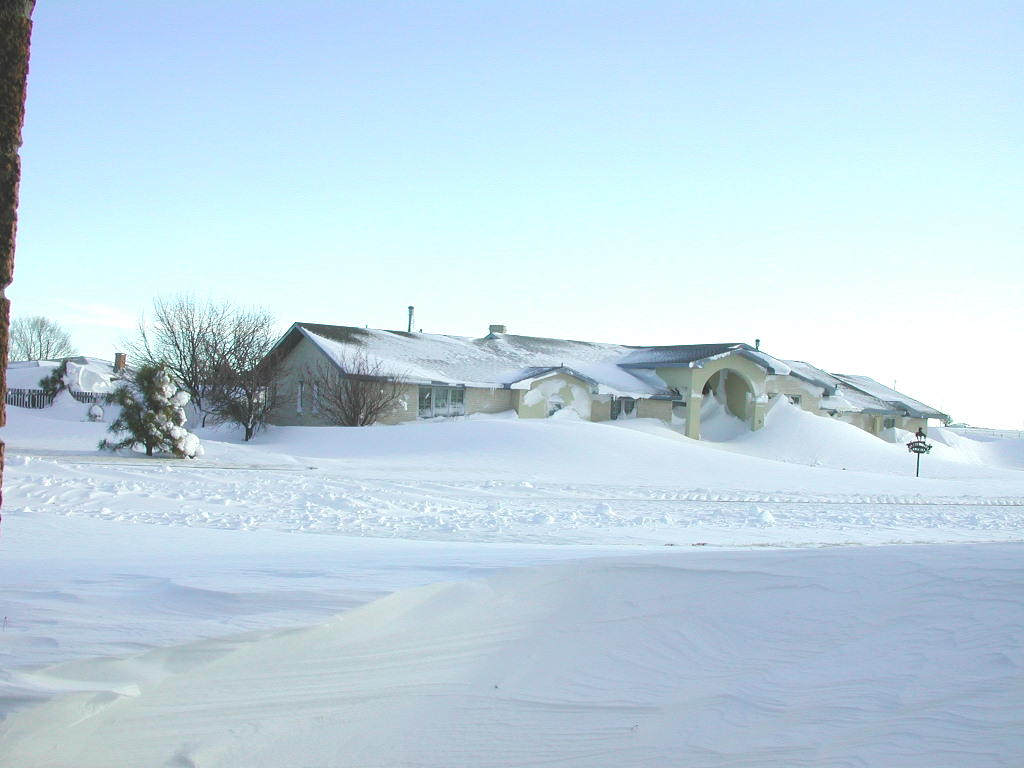 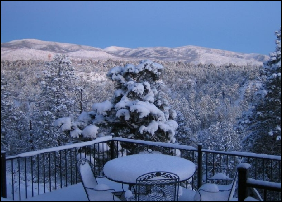
Photo by Neal Pederson
|
|
- If appropriate, check your supply of propane. Fuel carriers may not be able to reach you due to closed roads.
|
|
|
-
Your automobile can be your best friend or worst enemy during winter storms. Get your car winterized before winter arrives. The following items should be checked; ignition system, cooling system, fuel system, battery, lights, tires, heater, brakes, wipers, defroster, oil and exhaust. Keep water out of your fuel tank by keeping it full.
-
If you travel often during winter, carry a winter storm kit in you car. It should include a flashlight, windshield scraper, paper towels, extra clothes, matches/candles, booster cables, compass, maps, sand, chains, blankets and high calorie non-perishable food.
-
Winter travel by car is serious business. If the storm exceeds or tests your driving ability, seek available shelter immediately. If unable to find shelter, stay in your vehicle. Run the motor ten minutes each hour to maintain warmth, but keep your windows open a little to prevent buildup of carbon monoxide. Make sure your exhaust pipe is not blocked by snow. keep the car visible with brightly colored cloth tied to the antenna. Exercise periodically in your car by vigorously moving your arms, legs, toes and fingers.
|
|
-
Plan your travel. Try not to travel alone and drive in convoy when possible.
-
Drive carefully and defensively. Pump your breaks when trying to stop on snow or ice covered roads. Roads which may appear clear in the wintertime may actually be coated with a thin layer of ice, commonly called black ice. This thin layer of can cause you to lose control of your vehicle. Reduce your speed if you detect black.
|
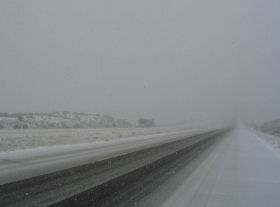
Photo by Brent Wachter
|
Winter Safety for Schools
|
-
Children can be especially susceptible to the dangers associated with winter weather. Their youthful enthusiasm often takes over when common sense should prevail.
-
School administrators and principals need to be sensitive to the dangers winter weather can pose to children and be prepared. Winter weather procedures and practices need to be established before the onset of winter cold. The following items should be considered when formulating a winter weather safety plan:
-
All schools should have ready access to current weather information. If the school is in a county covered by NOAA Weather Radio, that would be the best source. Commercial media can also be monitored. Arrangements can also be made with local law enforcement agencies to have critical winter weather forecasts relayed to the school.
- All schools need to have a functional plan in regard to closures due to snow, ice, or extreme cold.
-
During the winter months, guidelines need to be established regarding outside recess. Temperatures and wind chills need to be monitored and criteria set as to when outside recess will be allowed.
-
School bus drivers should receive extra training on driving during winter weather. Snow and ice can often accumulate quickly and unexpectedly on roads creating dangerous driving conditions.
-
With many households having two working parents today, it may be necessary for some children to be brought to school early. Schools should make provisions to allow children inside school buildings as early as possible during cold weather.
|

